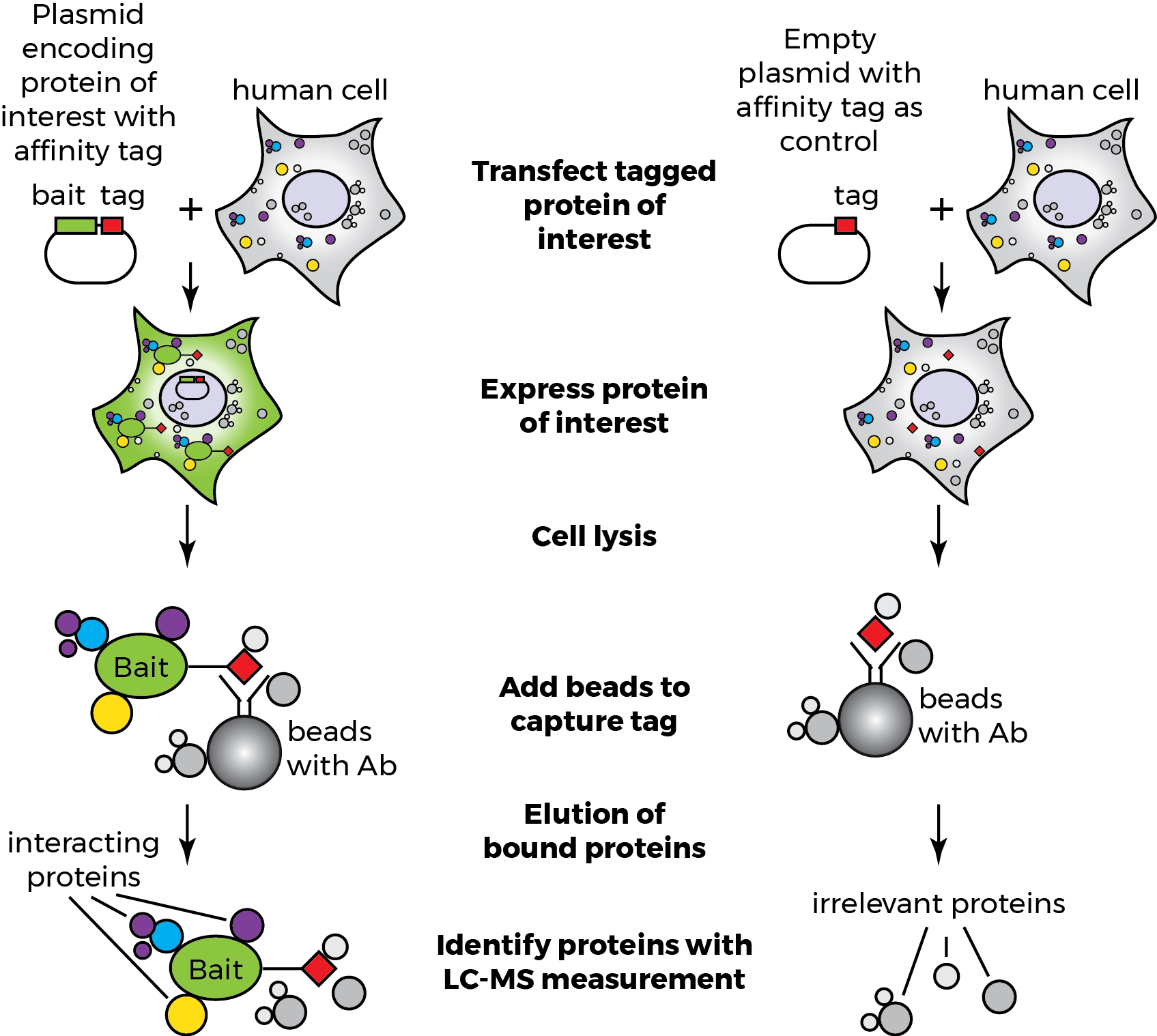Proteins typically do not function alone, but in physical or functional interaction with other proteins, forming macromolecular complexes. The complex cellular network of protein interactions is highly organized in time and space, and adapts dynamically to external and internal perturbations to define the cell’s functional state. Consequently, characterizing protein interaction networks and their dynamic changes in response to perturbations can better our understanding of protein function.
In the Krogan lab, we use a variety of different techniques to study PPIs:
 Affinity-Purification mass spectrometry (AP-MS): Requires an affinity tagged bait (3xFLAG, Strep, GFP, etc.).
Affinity-Purification mass spectrometry (AP-MS): Requires an affinity tagged bait (3xFLAG, Strep, GFP, etc.). - Endogenous protein immunoprecipitation: When we are only interested in identifying or quantifying interaction partners for a single protein and we have a good antibody for that protein.
- Proximity-Labeling MS (APEX-MS): Relies on fusion of a labeling enzyme (APEX, BirA, etc.) to the protein of interest. This method labels everything in ~10-20nm proximity of your fusion protein, but direct binding proteins, as well as those only in spatial proximity. Can be better for identifying transient interaction partners, at the cost of decreased specificity.
We often use affinity purification combined with quantitative mass spectrometry methods to characterize protein interactions networks. We apply these approaches towards understanding how viruses hijack the cellular machinery for replication and infection, and how genetic mutations cause rewiring of proteins interactions networks leading to the development of cancer or neuronal, cardiac or psyciatric disorders.
